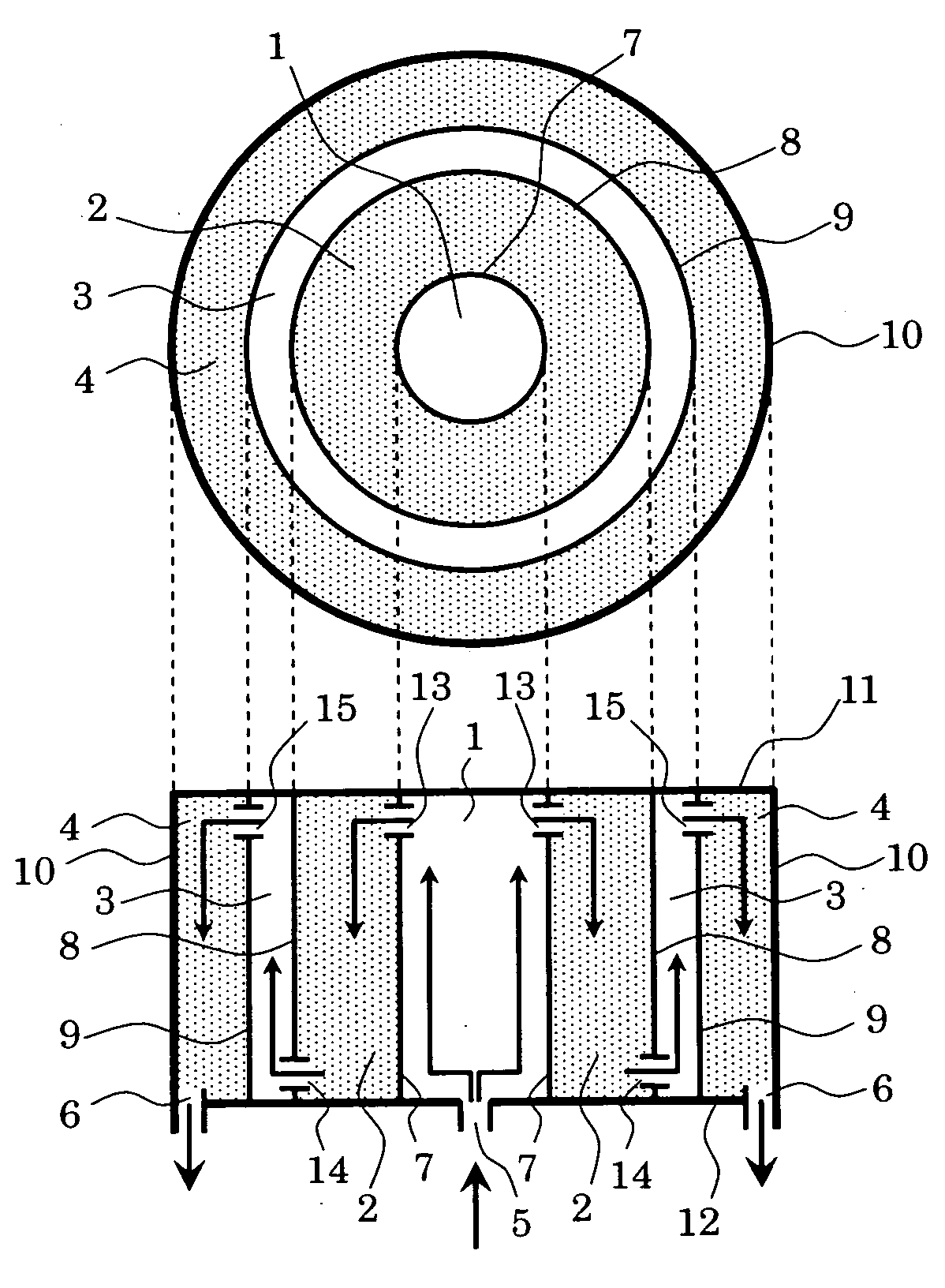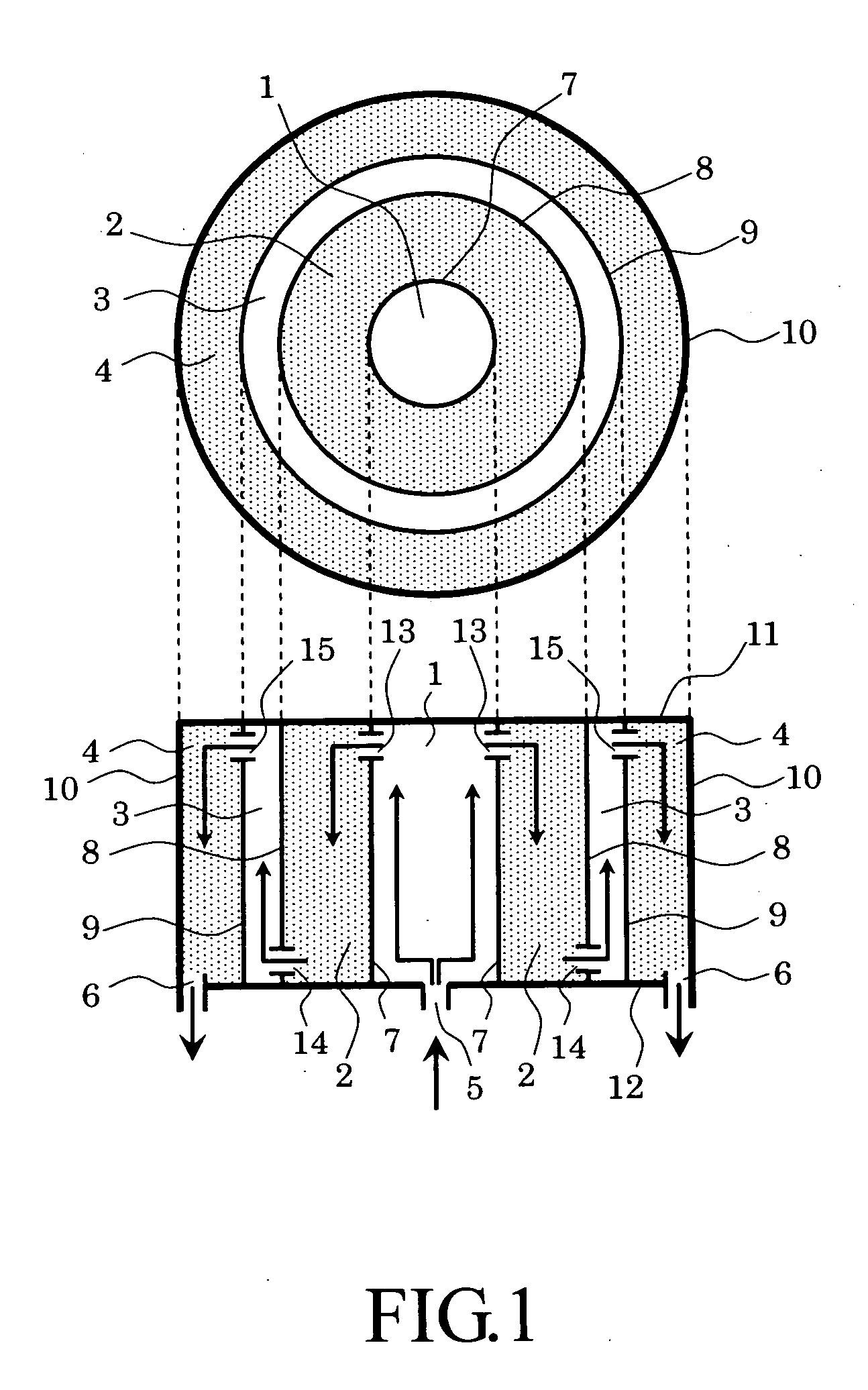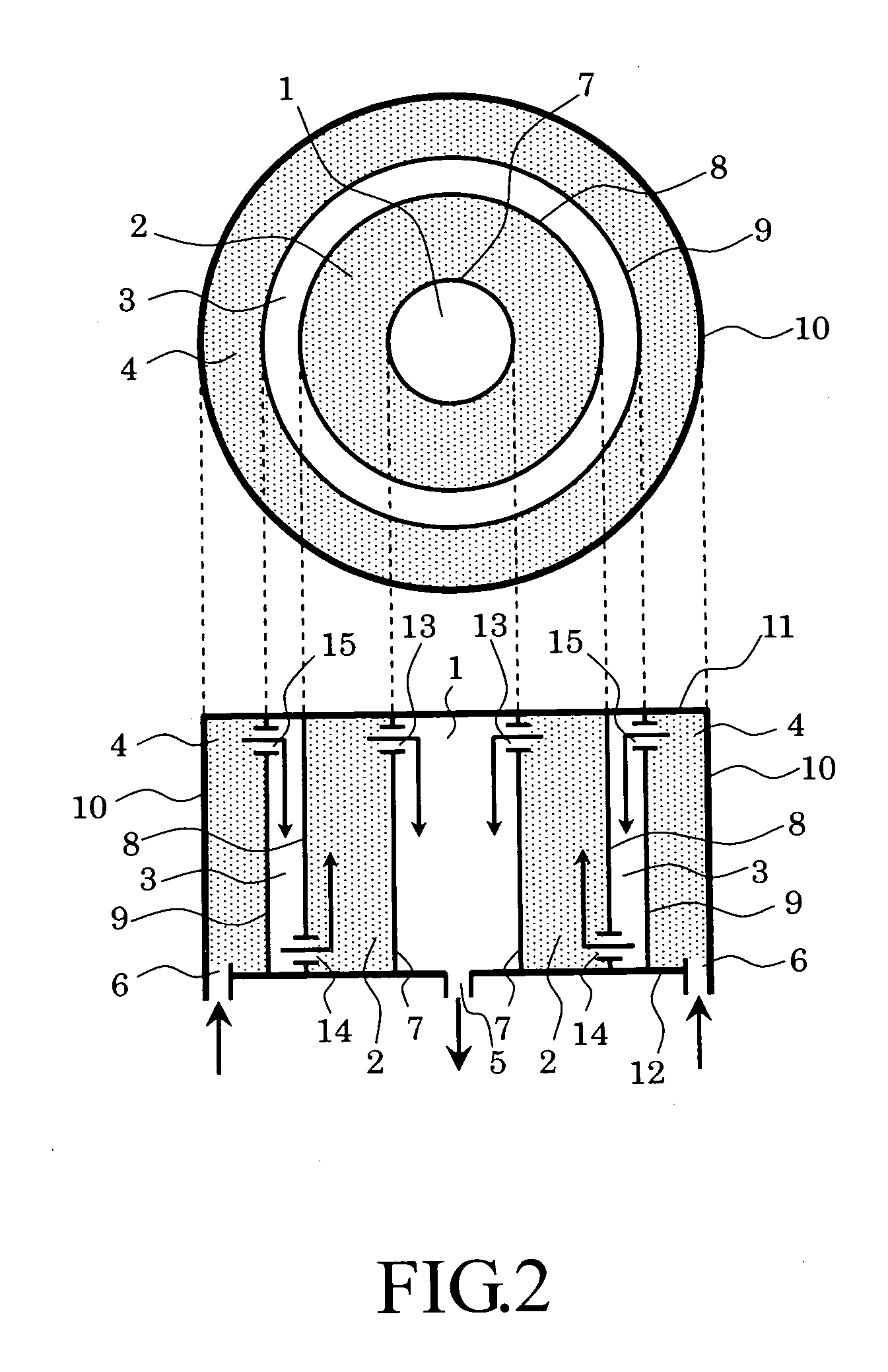Chemical reaction apparatus
a chemical reaction and apparatus technology, applied in the direction of chemistry apparatus and processes, physical/chemical process catalysts, hydrogen separation using solid contact, etc., can solve the problems of carbonate moving to the pores of solid catalysts and cloggings, and deteriorating the capability of solid catalysts and carbon dioxide absorbents, so as to improve the hydrogen yield and not deteriorate the hydrogen yield
- Summary
- Abstract
- Description
- Claims
- Application Information
AI Technical Summary
Benefits of technology
Problems solved by technology
Method used
Image
Examples
first embodiment
[0031]FIG. 1 is a schematic view showing a first embodiment of a chemical reaction apparatus of the present invention. In FIG. 1, an upper figure shows a sectional view of the chemical reaction apparatus when it is observed from an upper direction, and a lower figure is a sectional view thereof when it is observed from a lateral direction.
[0032] The chemical reaction apparatus includes first and second reaction chambers 1 and 3 each of which has a catalyst installed therein so that the catalysts cause a reaction for generating a gas containing hydrogen as a main product and carbon dioxide as a by-product from a material gas and first and second carbon dioxide absorbent chambers 2 and 4 acting as regions each of which has a carbon dioxide absorbent installed therein.
[0033] The first reaction chamber 1 has a material gas introduction pipe connected thereto. This pipe acts as a material gas introduction port 5. The second carbon dioxide absorbent chamber 4 has a generated gas exhaust...
second embodiment
[0065]FIG. 3 is a schematic view showing a second embodiment of the chemical reaction apparatus of the present invention. In FIG. 3, an upper figure shows a sectional view of the chemical reaction apparatus when it is observed from an upper direction, and a lower figure is a sectional view thereof when it is observed from a lateral direction. The second embodiment has the same arrangement as that of the first embodiment except that the directions in which gases flow are changed by changing the positions of gas introduction and discharge ports. The chemical reaction apparatus includes first and second reaction chambers 1 and 3 acting as catalyst regions each of which is filled with a catalyst so that the catalysts cause a reaction for generating a gas containing hydrogen as a main product and carbon dioxide as a by-product from a material gas and first and second carbon dioxide absorbent chambers 2 and 4 acting as carbon dioxide absorbent regions each of which is filled with a carbon...
example 1
[0086] Hydrogen was generated using the chemical reaction apparatus shown in FIG. 1.
[0087] Each of reactors had inner walls 7, 8, 9 and an outer wall 10 each formed in a cylindrical shape, the inner wall 7 had an inside diameter of 0.25 m, the inner wall 8 had an inside diameter of 0.75 m, the inner wall 9 had an inside diameter of 0.80 m, and the outside wall 10 had an inside diameter of 1.05 m. The inner walls 7, 8, 9 had a thickness set to about 0.005 m. Further, each of the reactors had a bottom and a ceiling therein which were separated from each other by a distance of 1.7 m, holes each having a diameter of 3 mm and distributed uniformly around the inner walls 7 and 9 in a band shape at a position of 0.1 m to 0.2 m below the ceiling, and holes each having a diameter of 3 mm and distributed uniformly around the inner wall 8 in a band shape at a position of 0.05 m to 0.15 m above the bottom.
[0088] Alumina particles, which carried about 20 wt % of metal nickel and had an average...
PUM
| Property | Measurement | Unit |
|---|---|---|
| Electrical conductivity | aaaaa | aaaaa |
Abstract
Description
Claims
Application Information
 Login to View More
Login to View More - R&D
- Intellectual Property
- Life Sciences
- Materials
- Tech Scout
- Unparalleled Data Quality
- Higher Quality Content
- 60% Fewer Hallucinations
Browse by: Latest US Patents, China's latest patents, Technical Efficacy Thesaurus, Application Domain, Technology Topic, Popular Technical Reports.
© 2025 PatSnap. All rights reserved.Legal|Privacy policy|Modern Slavery Act Transparency Statement|Sitemap|About US| Contact US: help@patsnap.com



